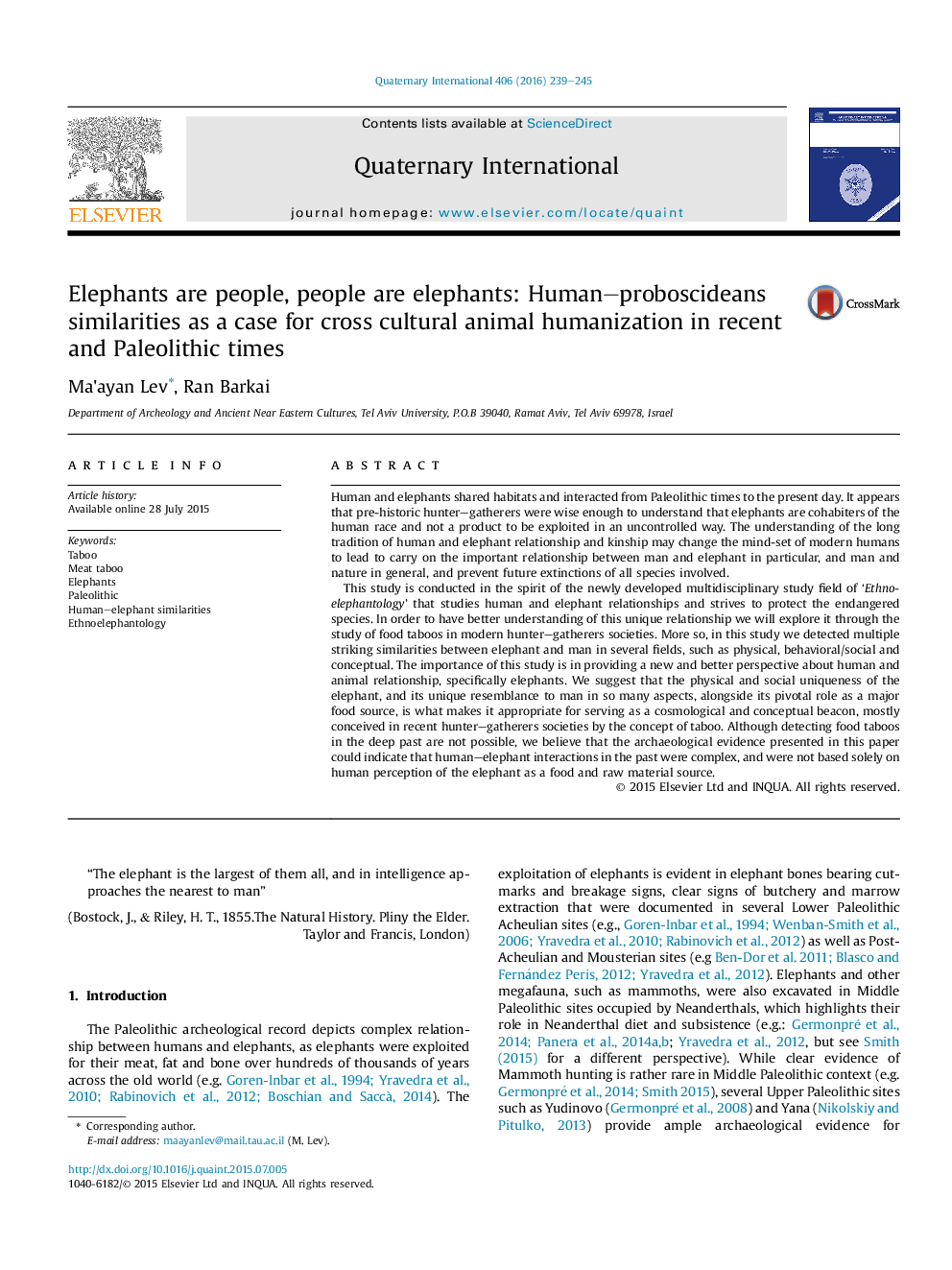| کد مقاله | کد نشریه | سال انتشار | مقاله انگلیسی | نسخه تمام متن |
|---|---|---|---|---|
| 1039956 | 944444 | 2016 | 7 صفحه PDF | دانلود رایگان |
Human and elephants shared habitats and interacted from Paleolithic times to the present day. It appears that pre-historic hunter–gatherers were wise enough to understand that elephants are cohabiters of the human race and not a product to be exploited in an uncontrolled way. The understanding of the long tradition of human and elephant relationship and kinship may change the mind-set of modern humans to lead to carry on the important relationship between man and elephant in particular, and man and nature in general, and prevent future extinctions of all species involved.This study is conducted in the spirit of the newly developed multidisciplinary study field of ‘Ethnoelephantology’ that studies human and elephant relationships and strives to protect the endangered species. In order to have better understanding of this unique relationship we will explore it through the study of food taboos in modern hunter–gatherers societies. More so, in this study we detected multiple striking similarities between elephant and man in several fields, such as physical, behavioral/social and conceptual. The importance of this study is in providing a new and better perspective about human and animal relationship, specifically elephants. We suggest that the physical and social uniqueness of the elephant, and its unique resemblance to man in so many aspects, alongside its pivotal role as a major food source, is what makes it appropriate for serving as a cosmological and conceptual beacon, mostly conceived in recent hunter–gatherers societies by the concept of taboo. Although detecting food taboos in the deep past are not possible, we believe that the archaeological evidence presented in this paper could indicate that human–elephant interactions in the past were complex, and were not based solely on human perception of the elephant as a food and raw material source.
Journal: Quaternary International - Volume 406, Part B, 25 June 2016, Pages 239–245
